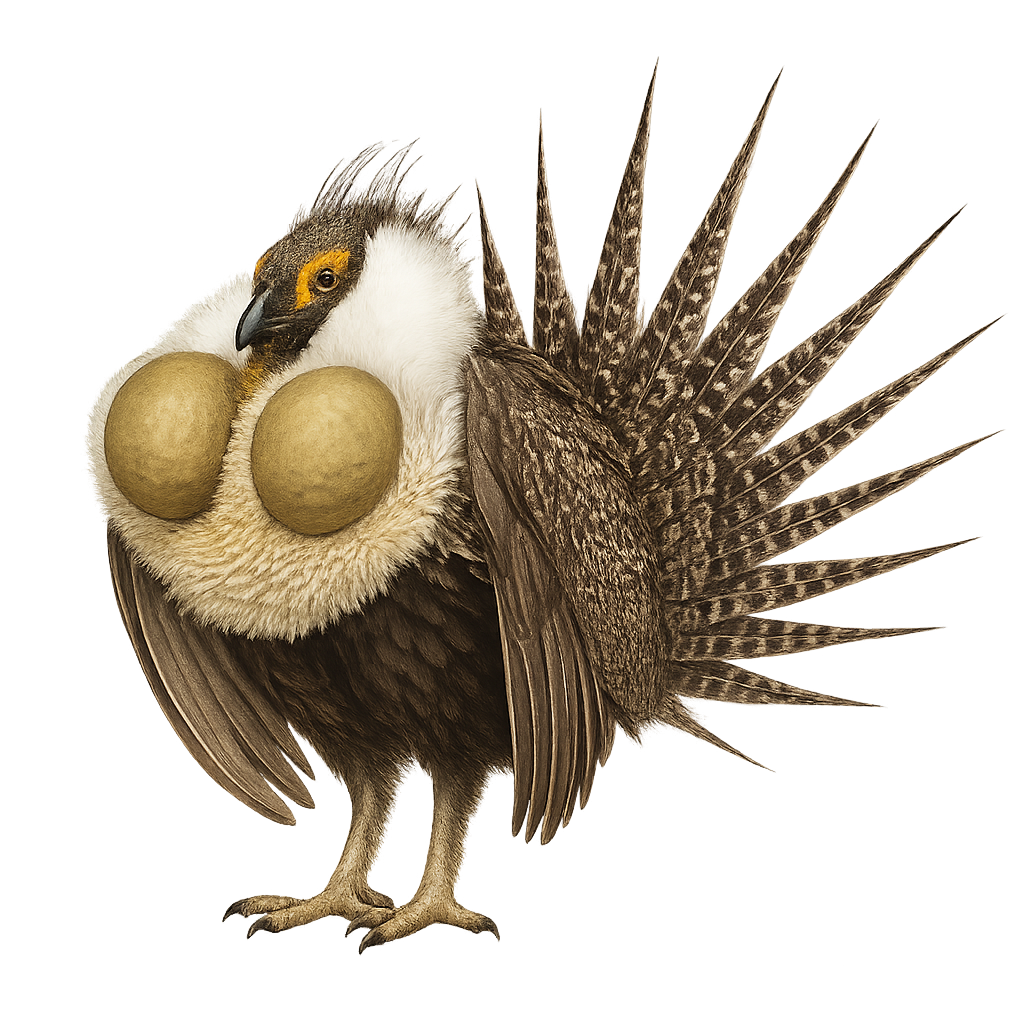Your wildlife photography guide.
Explore the sage grouse in detail, study its behavior, prepare your shots.
Where to observe and photograph the sage grouse in the wild
Learn where and when to spot the sage grouse in the wild, how to identify the species based on distinctive features, and what natural environments it inhabits. The WildlifePhotographer app offers tailored photography tips that reflect the sage grouse’s behavior, helping you capture better wildlife images. Explore the full species profile for key information including description, habitat, active periods, and approach techniques.
Sage Grouse
Scientific name: Centrocercus urophasianus

IUCN Status: Near Threatened
Family: PHASIANIDAE
Group: Birds
Sensitivity to human approach: Shy
Minimum approach distance: 30 m
Courtship display: March to April
Incubation: 25-27 jours
Hatchings: April to May
Habitat:
Prairies, steppes, shrublands
Activity period :
Primarily active during the day, with peak activity in the morning and late afternoon.
Identification and description:
The Sage Grouse, known scientifically as Centrocercus urophasianus, is a notable bird of the North American prairies. It is distinguished by its large size and mottled brown, white, and black plumage. Males are particularly striking with their white ruff and yellow air sacs, which they inflate during courtship displays. This species relies heavily on vast sagebrush landscapes for feeding and breeding. Unfortunately, habitat destruction has led to a significant decline in its population. The Sage Grouse is a social bird, often seen in small groups, especially outside the breeding season. Conservation efforts are crucial for its survival.
Recommended lens:
400mm – adjust based on distance, desired framing (portrait or habitat), and approach conditions.
Photography tips:
When photographing the Sage Grouse, it's crucial to maintain a safe distance of at least 30 m to avoid disturbing them, especially during the breeding season. Use a telephoto lens of 400 mm or more to capture detailed images without getting too close. The best photo opportunities occur early in the morning or late in the afternoon when the light is soft and the birds are active. Be patient and discreet to observe their natural behavior.
The WildlifePhotographer App is coming soon!
Be the first to explore the best nature spots, track rutting seasons, log your observations, and observe more wildlife.
Already 1 430 wildlife lovers subscribed worldwide

